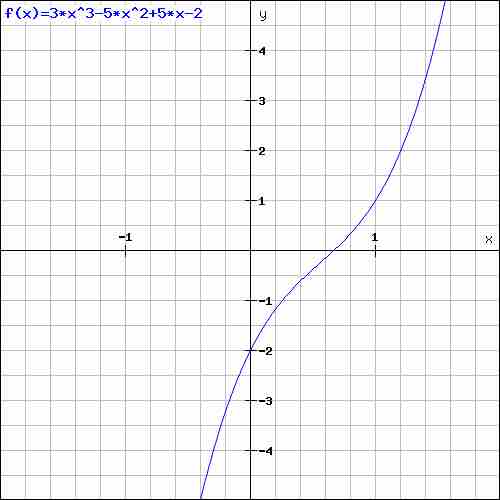One way to find zeros of a polynomial is trial and error. A more efficient way is through the use of the Rational Zero Theorem.
The Rational Zero Theorem
In algebra, the Rational Zero Theorem, or Rational Root Theorem, or Rational Root Test, states a constraint on rational solutions (also known as zeros, or roots) of the polynomial equation
With integer coefficients
If
-
$p$ is a divisor of the constant term$a_0$ . -
$q$ is a divisor of the leading coefficient$a_n$ .
So
Since any integer has only a finite number of divisors, the rational root theorem provides us with a finite number of candidates for rational roots. When given a polynomial with integer coefficients, we can plug in all of these candidates and see whether they are a zero of the given polynomial. Once we have found all the rational zeros (and counted their multiplicity, for example, by dividing using long division), we know the number of irrational and complex roots.
Since every polynomial with rational coefficients can be multiplied with an integer to become a polynomial with integer coefficients and the same zeros, the Rational Root Test can also be applied for polynomials with rational coefficients.
Example
For example, every rational solution of the cubic equation
must be among the numbers symbolically indicated by:

Cubic function
The cubic function
i.e. its numerator must divide
These root candidates can be tested, either by plugging them in directly, or by dividing and checking to see whether there is any remainder, for example using long division. The advantage of this is that once we have found a root, we immediately have found the smaller degree polynomial of which we again wish to find the roots and the rational root theorem will provide us with even fewer candidates for this root. Moreover, once we have established a root, we must use division anyway to check whether it is a multiple root.
The disadvantage is that we have to use long division more often. When there are a lot of zero candidates for a small degree polynomial, we may just want to plug in candidates and only use division when we have found a root.
In our example, we can plug in
Now we use a little trick: since the constant term of
Thus the candidates for roots of the polynomial in
Root candidates that do not occur on both lists are ruled out. The list of rational root candidates has thus shrunk to just